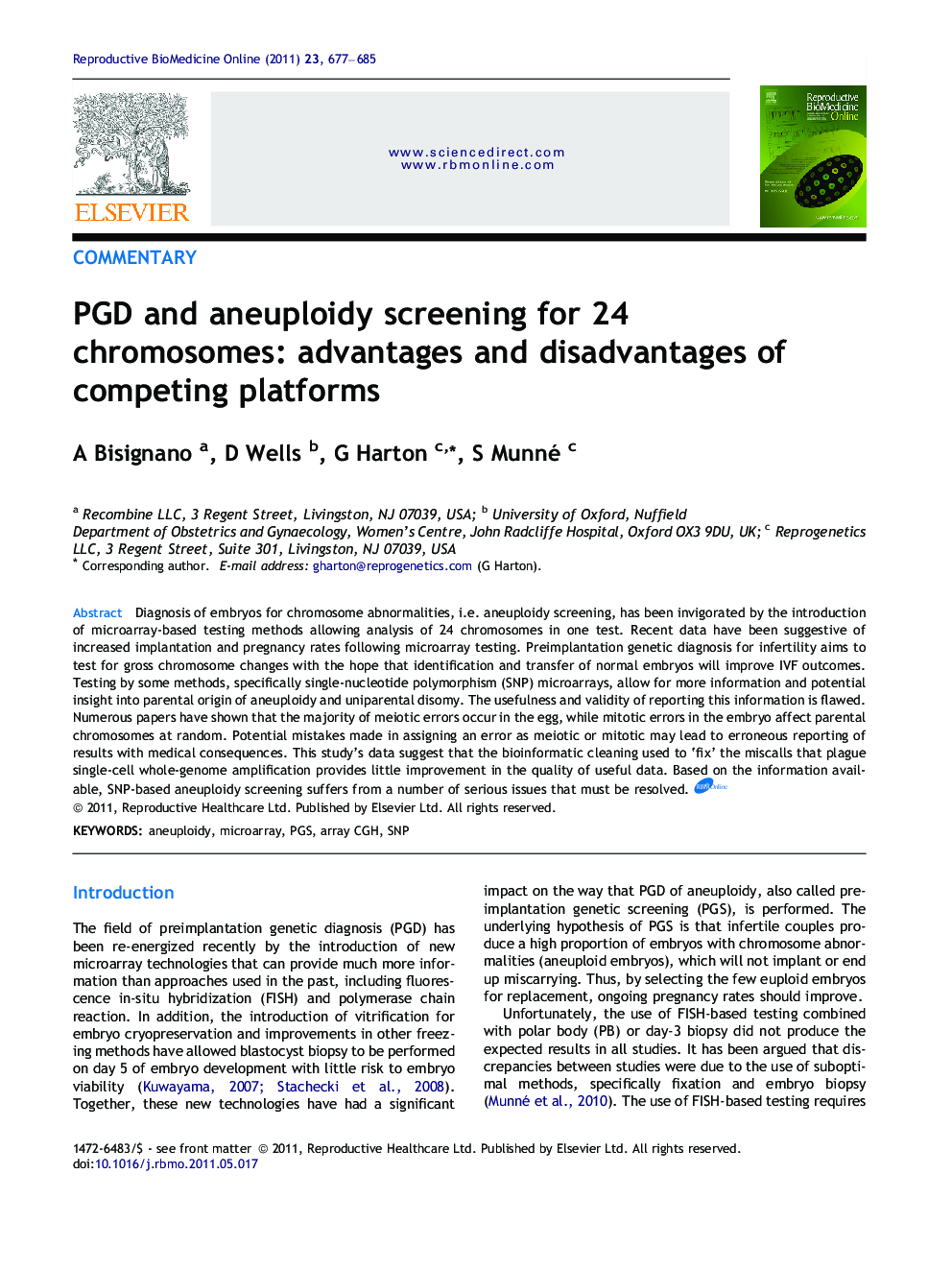| Article ID | Journal | Published Year | Pages | File Type |
|---|---|---|---|---|
| 3971220 | Reproductive BioMedicine Online | 2011 | 9 Pages |
Diagnosis of embryos for chromosome abnormalities, i.e. aneuploidy screening, has been invigorated by the introduction of microarray-based testing methods allowing analysis of 24 chromosomes in one test. Recent data have been suggestive of increased implantation and pregnancy rates following microarray testing. Preimplantation genetic diagnosis for infertility aims to test for gross chromosome changes with the hope that identification and transfer of normal embryos will improve IVF outcomes. Testing by some methods, specifically single-nucleotide polymorphism (SNP) microarrays, allow for more information and potential insight into parental origin of aneuploidy and uniparental disomy. The usefulness and validity of reporting this information is flawed. Numerous papers have shown that the majority of meiotic errors occur in the egg, while mitotic errors in the embryo affect parental chromosomes at random. Potential mistakes made in assigning an error as meiotic or mitotic may lead to erroneous reporting of results with medical consequences. This study’s data suggest that the bioinformatic cleaning used to ‘fix’ the miscalls that plague single-cell whole-genome amplification provides little improvement in the quality of useful data. Based on the information available, SNP-based aneuploidy screening suffers from a number of serious issues that must be resolved.
